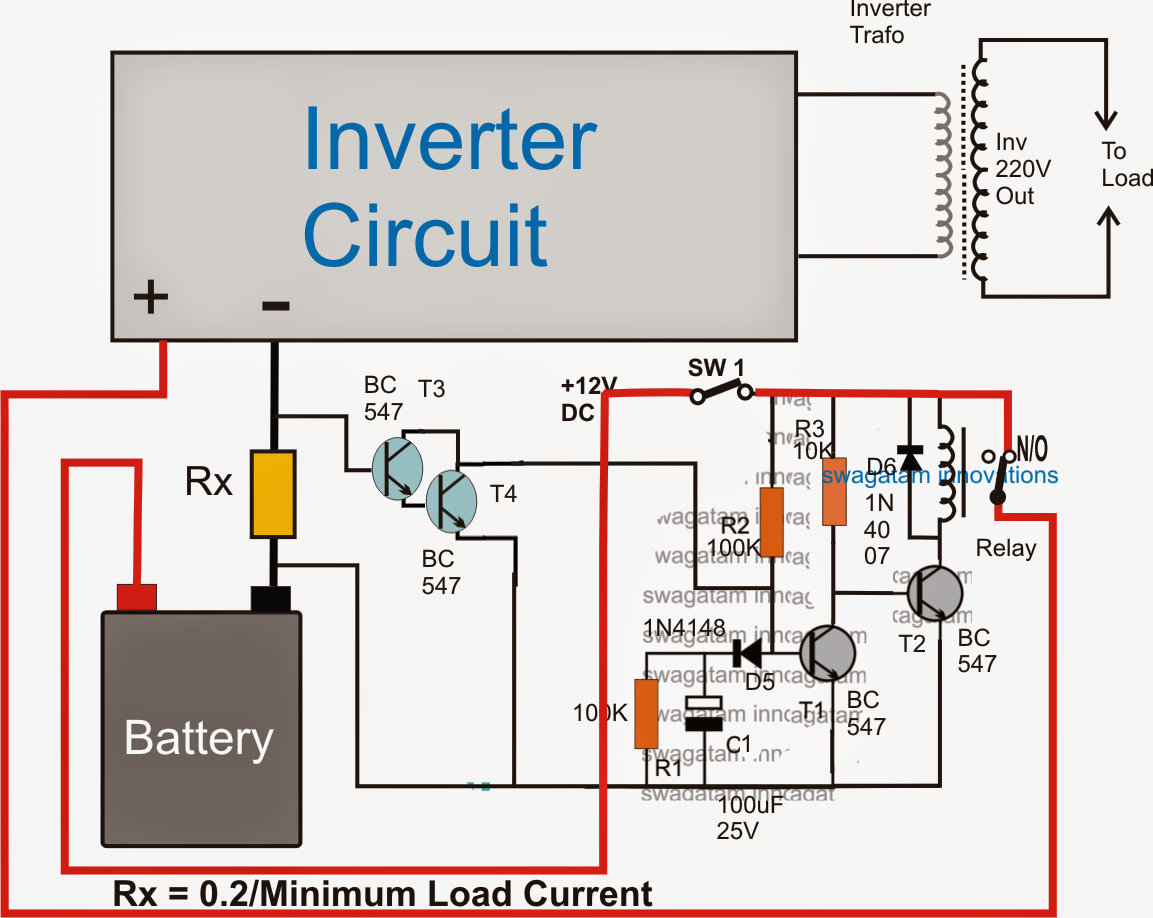The write-up examines a relay cut-off circuit which is often installed into inverters in order to makes sure a no load detection, shut down for inverters immediately implemented stopping the inverter from working without need.
The discussed theory refers to a problem in which a no load condition is expected to be discovered and cut-off from continuing, that is we explore a circuit pertaining to protecting against a no load condition for inverters.

As displayed in the above image, a no load detector and cut of technique could be opened up by using this layout in any inverter circuit.
The functional specifics could be comprehended with the following description:
The circuit includes two stage, particularly the current amplifier and sensor stage making use of the T3/T4 Darlington pair, along with a basic delay ON timer stage employing T1, T2 and the involved parts.
When SW1 is started up, the delay-ON timer is started via C1 which will start charging through R2 and D5 trying to keep T1 turned off in the operation. With T1 switched off, T2 is switched ON which as a result switches ON the relay.
The relay helps the positive from the battery to get linked with the inverter in order that the inverter is capable of start up and produce the specified AC mains into the desired home equipment.
Considering the existence of a load within the output the battery experiences a symmetrical sum of current intake, and in the process Rx encounters a current circulation through it.
This current is changed into an equivalent quantity of voltage around Rx that is detected by the T3/T4 Darlington pair and it is pushed to switch ON.
Having T3/T4 started up, C1 will be immediately stopped from becoming charged, leading to an instant deactivating of the delay ON timer, ensuring the output of the inverter never stops the supply of the voltage to the load.
On the other hand, imagine the output of the inverter is lacking virtually any load (no load condition), T3/T4 may be then struggling to activate, that enables C1 to acquire charge steadily so that the potential around it can be ample to activate T1.
The moment T1 is activated, T2 will be blocked and thus will be the relay. Considering the relay contacts cut-off and changed from N/O to the N/C contact, the positive for the inverter is likewise cut-off, the device reaches a stand still.
what is the value of the RX on your circuit
The formula for calculating RX is given in the circuit diagram, please check it….
i want to make static transfer switch circuit which will have two 12v dc power sources and able to switch the the second source whenever the priority source fails in no more than milliseconds so plz help me
just Google “router modem DC ups circuit”…you will get the required circuit in the results
hello, i thank you for a good circuit you published so i would like to make this circuit able too detect back the load and switch on when it is reconnected. so how can i modify the circuit? thanks in advance